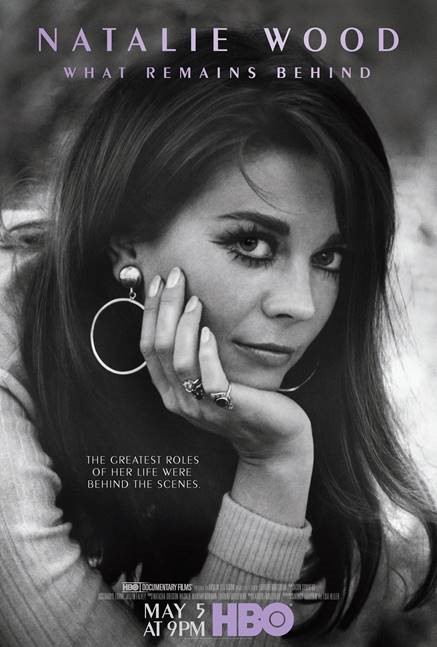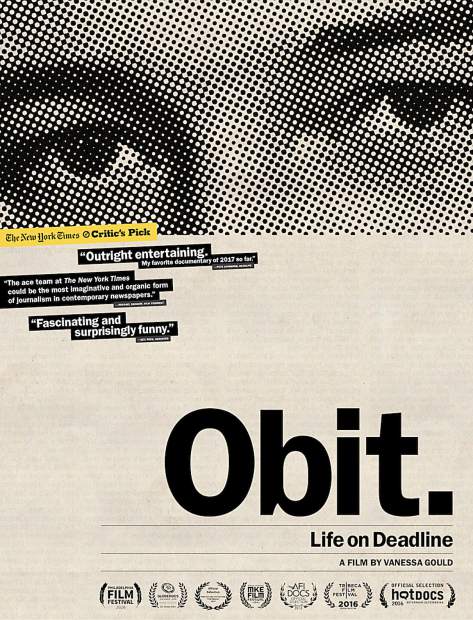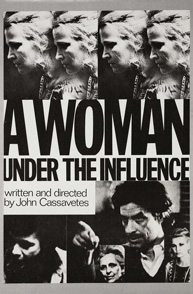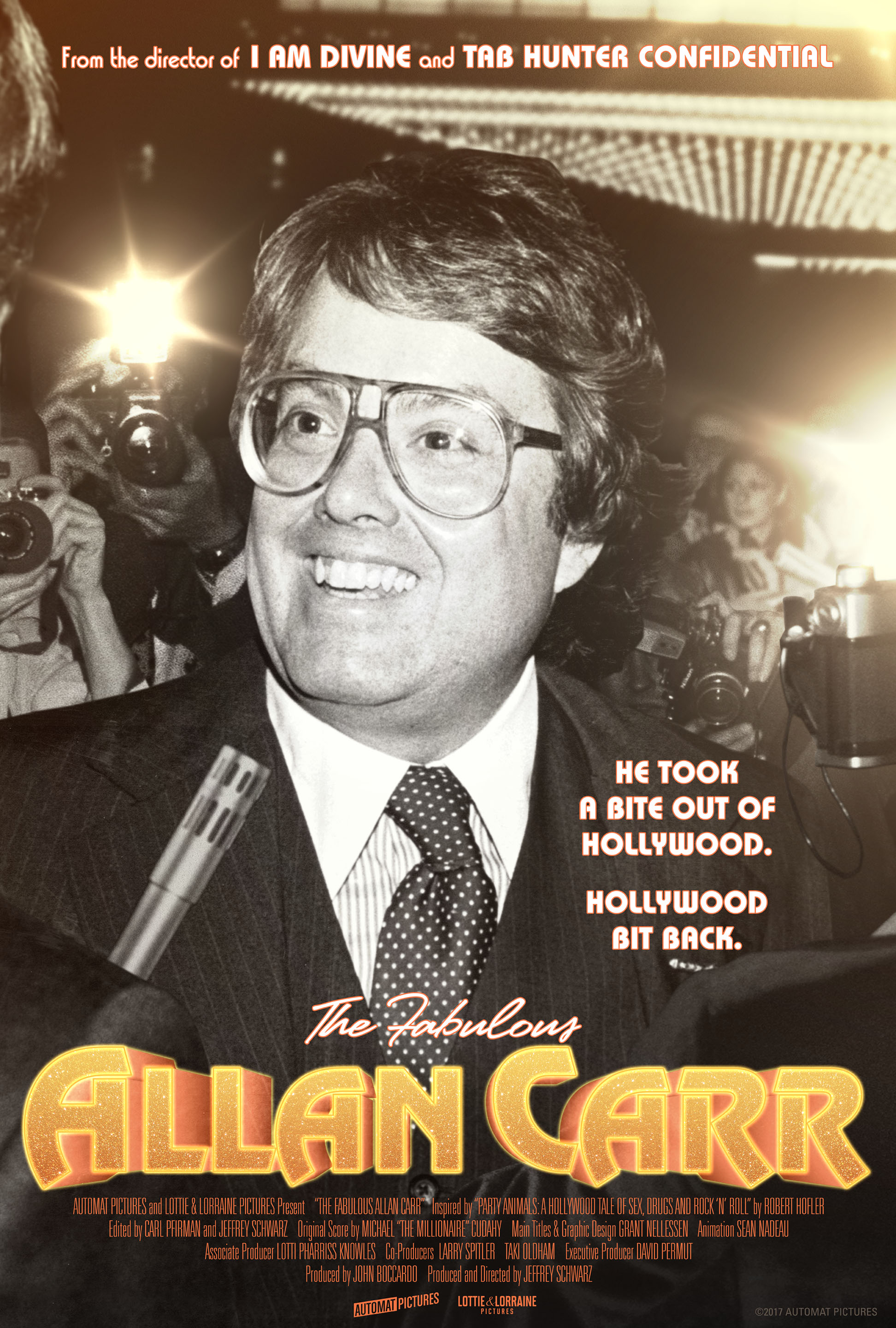HBO portrait of Natalie Wood seems indecisive on what’s the greater tragedy: her death, or the speculation about it
There are 336 (that’s correct, 336) still photos of Natalie Wood shown in “Natalie Wood: What Remains Behind,” an HBO production that brings to mind the old newspaper phrase, “A story in search of an angle.”
Cameras followed Wood everywhere, except to the place everyone cares about — the back of The Splendour, where a dinghy was attached, and something went horribly, horribly wrong one night in November 1981.
There may not be an angle to “What Remains Behind,” but there is a crown jewel, one that L.A. County cops with unlimited resources have been unable to acquire — a relaxed interview with Robert “RJ” Wagner about the night of Natalie’s death.
Wagner’s observations on this subject have always merited headlines, now as much as ever given that in 2018, frustrated authorities labeled him a “person of interest” in the drowning, a dubious development and an understatement of Hollywood proportions. But it’s hard to blame the cops or the public — Wood’s death remains a startling mystery, and Wagner, who was twice married to Wood, including when she died, knows more about it than any other human.
Those who harbor strong opinions about this case — and it’s unlikely that very many still do, although there seems to be a sinister reference to it in Quentin Tarantino’s “Once Upon a Time... in Hollywood” — are not going to hear anything to change their mind. Wagner is not one of the credited producers, but he may as well be. He does not submit to questioning from filmmakers but from his stepdaughter, Natasha Gregson Wagner, who is one of the producers and assuredly takes Wagner’s side. (There is certainly a lawyer or two seated off-camera.) But their conversation about the drowning, teased throughout the production and revealed near the end, is very fair, and powerful. Wagner is a consummate actor, but this is real, and, now 90, his recollections are razor-sharp. At one point, he explains why, on the night before the drowning, Natalie stayed at a hotel: “We couldn’t pick up a mooring inside the harbor.” No room for Natalie Wood, Robert Wagner and Christopher Walken at the harbor? Sometimes, even celebs have to wait in line.
It’s clear Wagner has lived with anguish since 1981. What about another word ... guilt? He admits there was tension between himself and Walken before Natalie’s death. The whole excursion seemed a bad idea. The question that is never asked in this film is why Wood, Wagner and Walken are on this trip together. Walken was co-starring with Wood in the movie “Brainstorm” and was in Hollywood to finish the film. He didn’t live in Los Angeles, says Wagner’s daughter Katie. He apparently was not part of the Wood-Wagner circle of friends, which seems much more Old Hollywood. Walken is an independent cinematic icon, almost a counterculture figure; Wagner is a mainstream Hollywood breadwinner, even touting reverse mortgages in the 2000s.
The most important word in this film is said by Katie Wagner, about the guest list for the excursion: “They asked several other friends that just didn’t feel comfortable and didn’t want to go.”
“Comfortable” ... How anyone would turn down an invitation to sail with Natalie Wood and Robert Wagner and Christopher Walken, who knows. Evidently, friends sensed trouble brewing.
The director of “Brainstorm,” Douglas Trumbull, is brought in to say he detected no chemistry whatsoever between Wood and Walken on the set, and thus, perhaps underestimating the impact of acting, says he finds it “impossible” to think there could have been an affair in progress at Catalina Island. But why Walken was on the boat, without his wife (he’s been married since 1969 to Georgianne Thon, a casting director) or any other guests, is certainly curious. Did Natalie want to make RJ jealous? Was she sending a message? Or was the couple eager to welcome a current A-lister into their circles well after Natalie’s star had begun to fade? Walken probably has an idea; he hired a lawyer and has been cleared.
Wagner says there’s an assumption, quite possibly accurate, that Wood was simply annoyed by a banging dinghy, stepped out to secure it, and fell in the water, possibly bumping her head. If so, there shouldn’t be any degree of guilt, nor should it matter that Wagner even argued with Walken. Will we ever know all of Wagner’s recollections of that evening or how strong his marriage was or whether he quarreled with Natalie? No, not here, not ever.
“What Remains Behind,” a curious title, is a 2020 release directed by Laurent Bouzereau, who has specialized in “making of” documentaries on famous films (his Wikipedia page says he has done more than 150), many of them involving works of Steven Spielberg. These productions, typically seen as DVD special features, are often irresistible and sometimes as interesting as the movies, and Bouzereau must be among the gold standard. The problem is calling a film such as “What Remains Behind” a “documentary” or “movie,” though technically, those terms are passable and used here. It’s a recollection, a recap of a news story, though it does not fall into the category of re-creation in which a famous person’s life is depicted and summarized in chronological order. Many of these productions deserve more than being packaged as DVD extras, but they don’t really qualify as theatrical releases. They’re perfect for the world of streaming, which is flooded with creative cash as tech giants vie with legacy Hollywood institutions for content.
“What Remains Behind” bears maybe a few similarities to 2015’s “Ingrid Bergman: In Her Own Words,” which played at a few theaters and took a stab at drama. Bergman’s stardom came later in life than Wood’s, but there lingered an immaturity throughout her adult years, a perpetual teenager whose playground was the whole world. Bergman’s punishment was to be denounced on the U.S. Senate floor; Wood’s was to slip off of a boat amid an ill-advised outing.
Wood’s career is a spectacular success story but not without setbacks. With all respect to Wagner, she appeared to have difficulty with men. She had two short-lived marriages and died the day her husband quarreled with her co-star. Unfortunately, in “What Remains Behind,” her various relationships are virtually ranked by the star power of her significant others. This is Hollywood, after all, where fame and money can take care of a lot of problems that might devastate regular people. It could be said that “What Remains Behind,” is simply being honest and complete, but there is a definite element of braggadocio in pointing out Natalie dated Warren Beatty and Frank Sinatra.
Wood, one of humanity’s most beautiful and charming people, was raised by a stage mother (no one in the production denies this) and began acting at age 4, to enormous success. Her father is barely mentioned. They were Russian immigrants, and they hit the gene-pool jackpot. Natalie’s mother is portrayed as difficult and demanding yet apparently was not estranged from the family based on commentary in “What Remains Behind.” There is predictably, but still disappointingly, little in the way of financial revelations in “What Remains Behind.” There is no indication that Natalie ever had to cut back her lifestyle, even after becoming semi-retired in the ’70s, perhaps because Wagner starred in a couple of hit TV series. However controlling her mother was, Natalie evidently earned and saved a great deal of money. Many of the problems that plague child stars, Natalie avoided.
But not all of them. One biographer wrote that Wood was the victim of a rape at age 16. That is not mentioned in “What Remains Behind” (the film’s apparent response to such stories is a clip of Wood telling a TV interviewer in the 1970s that nothing of the sort ever happened), but there are strong hints of an underage tryst with famed director Nicholas Ray. A friend of Wood, Alice Emmy Price, says that when she and Natalie went to Ray’s apartment, “I never went upstairs.” It is also acknowledged that Wood one night in 1965 took too many sleeping pills. Playwright Mart Crowley, a friend of Natalie’s, says it was “an overdose and a half; God almighty.” Gregson Wagner deems the incident not a suicide attempt but “cry for help.”
There is no mention whatsoever of Wood having any concerns about weight, a common psychological burden of film actresses. She is shown in a one-piece swimsuit near the end of her life in her acclaimed role in TV’s “From Here to Eternity.” Around age 30, she is devastating in a bikini in “Bob & Carol & Ted & Alice,” a big box-office success from which Wood famously received a cut of the gross. “She owned points in that film,” is how Gregson Wagner puts it.
“Bob & Carol & Ted & Alice” helped Wood achieve, like Jane Fonda, the rare distinction of success in both Old Hollywood and New Hollywood. Immediately after, Wood eased into semi-retirement, raising her daughters. Gregson Wagner says her mother fought for equal pay for women, but there is no indication she took a stance on Vietnam or the women’s movement. She didn’t hang out in Gloria Steinem circles. Wood and Wagner were admirable, seasoned pros from an earlier time. They worked, they protected their image; they didn’t do controversial or free-spirited things.
Career-wise, it seems hard to do better than Wood. But Gregson Wagner refers to the scorecard that Hollywood celebs often swear they don’t care about — Oscar nominations. Wood had three, an extraordinary total for anyone, but never won. She did win a Golden Globe for her role in the acclaimed TV version of “From Here to Eternity,” but that honor, duly noted, feels like a consolation prize.
It’s odd that Wood never won an Oscar, because, though a mainstream movie star, she also found herself in landmark works. “The Searchers” is regarded as the 7th greatest film of all time by the toughest critics. She was in “Rebel Without a Cause,” “Splendor in the Grass,” “Bob & Carol & Ted & Alice.” And of course, there were “Miracle on 34th Street” and “West Side Story.”
One of her greatest roles, though extremely brief, was a cameo in “The Candidate” with Robert Redford, who appears in “What Remains Behind” mostly to share his thanks for Wood’s early interest in his career. He has no colorful stories to share. In “The Candidate,” Wood attends a fundraiser for Redford’s Bill McKay, a beautiful scene blending filmdom and pop culture showing Wood in her early 30s, apparently politically conscious (though politics are nonexistent in “What Remains Behind,”), playing herself, a character equally as fascinating as her greatest roles.
Redford’s observations in “What Remains Behind” are like those of other A-listers (or onetime A-listers) including George Segal and Richard Benjamin and George Hamilton and Dyan Cannon, who have nothing juicy. Mia Farrow lavishes praise and little else. Notably, Warren Beatty and Christopher Walken are not interviewed.
Part of the goal of “What Remains Behind” seems to be to connect the Natalie Wood family tree. The film introduces viewers to Gregson Wagner, her half-sister and her stepbrother (although that may not be the precise term). The way Gregson Wagner talks is cute, referring repeatedly to “Mommy” and “Daddy Wagner” and “Daddy Gregson.”
Every good movie needs a villain. That role is lightly handed here to Natalie’s younger sister, Lana Wood, who evidently is on the outs with the Natalie family tree. She is not interviewed in this program, and clips of an interview she gave to Dr. Phil McGraw questioning the conclusions of Natalie’s death are introduced only at the 92-minute mark. Lana Wood tells McGraw, “I think the investigation was mishandled from the beginning. Things were oversimplified and ignored,” though she says “conspiracy” is a bit too much.
Courtney Wagner, the lone child of Wood and Wagner together, says, “I don’t even think she believes what she’s saying.”
Actually, Lana Wood probably does believe the investigation was “mishandled” and “oversimplified.” There was drinking, and arguing, and someone very famous died for absolutely no reason. And the other three people on the boat all have incentive to reveal as little as possible about the drinking and arguing part.
But Lana Wood’s view of this case seems colored by her own relationship with Wagner, which doesn’t sound too great.
Natasha Gregson Wagner says that she’s heard Lana say that R.J. kept Lana away from Natalie’s kids. “But I don’t have a memory of being close to Lana even before my mom died,” Gregson Wagner says. “She’s literally accused my dad of killing my mom, when that’s the farthest thing from the truth.”
A half-dozen people express disdain toward Lana Wood in “What Remains Behind.” Jill St. John (Wagner’s wife after Wood) even offers an opinion on Lana’s mindset and shrugs, “Her name was not Wood, but her mother changed it to Lana Wood” ... which is basically the same thing their mother did with Natalie. (In an odd coincidence, St. John and Lana Wood were both in the 1971 James Bond film “Diamonds Are Forever,” the biggest credit for both.)
There’s clearly a split between the Zakharenkos (Natalie’s birth name) and the Wagnerites, Natalie’s old and new worlds. Wood’s mother, who died in 1996, is described in “What Remains Behind” as a controlling stage mom not really welcome among Natalie’s children. There are no allegations of financial impropriety, but when a small child is an immigrant couple’s meal ticket ... that’s just not the order in which life is supposed to work. Alice Emmy Price, Natalie’s childhood friend, says she was allowed to befriend Natalie because “I passed her mother’s tests.”
“They were helicopter parents, you know,” Wagner says.
Mart Crowley reveals that Natalie’s mother approached him at Natalie’s funeral and, apparently pointing at him, told him that had he been on that boat, “my daughter would be alive.”
Natasha Gregson Wagner and Courtney Wagner both even criticize Natalie’s mother’s out-of-control grief after the drowning. “I didn’t feel safe around her,” Natasha says. Courtney says, “Talk about someone that was checked out. ... She was very dramatic too.”
Someone far closer to Natalie Wood’s death who could’ve been skewered in this production is Dennis Davern, the Splendour skipper hired by Wagner whose claims of a few years ago spurred authorities to sort of reopen the case (or, in other words, publicly plea for Wagner or Walken to reveal more about the incident).
Davern’s speculation about how Wood got into the water is likely no better than anyone else’s, but he is a witness to the very embarrassing events prior to Wood’s death that Wagner would clearly want to keep under a lid.
Davern claimed in 2018 that, while working for Wagner for a whole year after Wood’s death and staying in Wagner’s house, he was kept “hostage” and apparently locked in his own bedroom every night.
The guess here is that, in the short-term aftermath of Natalie’s death, Davern did not sell a story, which was appreciated by Wagner, who was also wary that Davern could choose to do so at any time; look what happened in 2014.
“What Remains Behind” includes some impressively candid accounts of Hollywood stardom, not all of them favorable to its subject. Family members become estranged, affairs happen, marriages come and go. You get over it by paying a shrink and finding a new lover. Richard Gregson bluntly and without embarrassment reveals that “I had an affair with her secretary” and that Natalie kept police “on guard there for a week.” Lana Wood has been married six times. One term that gets tossed around quite a bit is “analysis.” A lot of celebrities swear by it. One reason is that all human beings need to tell someone about their problems. Most can’t afford to pay for the privilege on an ongoing basis. Famous people can, and as an added incentive, they know the stories and feelings they’re revealing aren’t going to end up in the National Enquirer.
It’s said in “What Remains Behind” that right after Natalie’s death, Wagner apparently returned to the mainland with Walken on a helicopter and went straight not to his kids but therapist, to learn what to say to the children.
Natasha Gregson Wagner says, “After my mom died, I found a lot of strength and clarity from being in therapy.”
A childhood star, Wood was undoubtedly waited on by adults virtually her entire life. It is said she never cooked at home, only huevos rancheros on The Splendour. There are several references in the film to Willie Mae Worthen, the beloved nanny to Wood’s children. While Natalie’s parenting is never questioned in this film, it’s clear that Willie Mae assumed a lot of typical mothering roles. Yes, that’s how it works in megastar families, but Wood likely realized from an early age that even parental functions could be outsourced. Worthen died in 2017, presumably before this project came to fruition.
Gregson Wagner in multiple instances suggests her mother, at home, was just an ordinary person who was not at all vain about glamour. Gregson Wagner says she would think, “What’s the big deal about you, lady. But then she and my stepdad would get dressed up and they would go out to dinner or something, and she was amazing-looking.” And that’s why the world cares, because of how Wood would look on a night out.
Given that many people interviewed in “What Remains Behind” are movie stars, including Gregson Wagner, viewers probably need to see more of their faces. Yet Bouzereau plasters an avalanche of Natalie Wood pictures, home movies and movie clips throughout the production, including during the ending credits. It seems like overdoing it, but then again, he’s right — in the category of having one’s picture taken, Natalie is superhuman. It’s impossible not to stare at all of them, age 5, 15, 40, doesn’t matter.
Paparazzi are a curious absence from this movie. Evidently neither Natalie nor RJ had a big problem with them. Both seemed to like having their picture taken. There’s no suggestion the actors were hassled by anyone during the trip to Catalina Island. However, it’s fair to speculate that upon learning Natalie was missing, Wagner would’ve been inclined to keep the situation as private as possible to avoid, in the event she was found safe with the dinghy somewhere, supermarket headlines about an embarrasing police call.
No one in “What Remains Behind” tells of Natalie’s relationship with fans, whether she liked being asked for autographs, approached in restaurants, etc. It’s not a thrill for everyone. One could evaluate Wood’s life and say either, “This was unbelievably great,” or “This was pathetically bad.” There was enormous fame and beauty and a lot of money, and then there were psychological stresses, multiple marriages, multiple breakups, an untimely death.
Wood’s death is so unusual, it will forever eclipse her enormous fame. Though unfortunately associated with so many puns, none of which need to be mentioned here, it is among numerous candidates for Hollywood’s Worst Day. That distinction probably belongs to the Sharon Tate murder, or perhaps the deaths of Marilyn Monroe or James Dean, or the plane crash that took Carole Lombard. To include references to skeptics such as Lana Wood and tabloid headlines does burnish the credibility of “What Remains Behind.” The mystery about the drowning is acknowledged multiple times, often by Wagner, who concedes there has to be conjecture about it.
Boating carries risks. When docked, boat risks are seemingly minimal. A later owner of the Splendour gives a thorough tour on YouTube. The boat is not as big as you might think for a Hollywood power couple; perhaps they preferred a vessel smaller and more easily maneuvered and less likely to catch the eyes of paparazzi. The photo at the top of this page shows where the dinghy was tied and the little door that Natalie presumably stepped through.
People in this movie suggest that reports of Natalie fearing “dark water” are probably untrue, even though Wagner mentions it in his book. It is said that she’d get in the water at pool parties, though it’s not declared that she could swim.
Wagner does not provide a meticulous account of Natalie’s final night but says that during the evening, he clashed with Walken. “He said, ‘You know I think it’s important that she works.’ I said, ‘I think that’s important that you stay out of our life,’” Wagner says.
Wagner admits he was really “angry” at Walken and smashed a bottle on a table. “I was also a little high at the time, I might say. But I calmed down,” he adds, “high” presumably referring to agitation and/or drinking and not drug use.
Could Wood’s temperament have led to her death? Her ex-husband Richard Gregson is the only one to reveal, “She had a pretty good temper, I must say. When she let go, she let go.”
A clip in the movie shows a TV report of L.A. Coroner Thomas Noguchi discussing the death. The reporter says Noguchi “continually referred to Wood’s condition as slightly inebriated.”
That’s interesting terminology. Natalie’s blood-alcohol level was found to be 0.14%, nearly double what is typically considered drunken-driving, plus she had traces of a motion-sickness pill and a painkiller.
An Associated Press account says Wood, Wagner and Walken spent “several hours drinking” but that Wagner in his book insisted no one in the party was “anywhere near drunk,” just tipsy.
And there, out of this massive, 100-minute photo album and recollection, we have a point: Drunkenness kills. Not just from car accidents, not just from cirrhosis. It can strike the wealthy and famous and beautiful, out of the blue, in seemingly safe surroundings. That is the inescapable conclusion from Wood’s death. She wasn’t tipsy. She was hammered. That is not a crime (provided one is not operating a vehicle), and it’s something so many have done, but it’s embarrassing, particularly for a mother of two young girls, a woman who might’ve at that moment been playing a couple of men off of each other.
That message could’ve been presented in the 1980s. But this is 2020, and, thanks to therapy, friendships and the passage of time, “What Remains Behind” tells us that extreme grief is overcomeable. Natalie’s family is doing OK. The pain and loss will never go away, but life goes on, and not a bad life either for all involved. So there’s a movie here — that money and fame and time can transcend anything, even an unfathomably regrettable boat tragedy.
3 stars
(May 2020)
“Natalie Wood: What Remains Behind” (2020)
Featuring
Natalie Wood
as Self (archive footage) ♦
Natasha Gregson Wagner
as Self - Daughter of Natalie Wood ♦
Julie Salamon
as Self - Author, Film Critic ♦
Robert Redford
as Self - Actor, Filmmaker ♦
Mia Farrow
as Self - Actor, Friend ♦
Courtney Wagner
as Self - Daughter of Natalie Wood ♦
Robert Wagner
as Self – Natasha’s Stepfather, Actor ♦
George Hamilton
as Self - Actor ♦
Mart Crowley
as Self - Playwright, Friend ♦
David Niven Jr.
as Self - Producer, Friend ♦
Katie Wagner
as Self - Daughter of Robert J. Wagner ♦
Richard Gregson
as Self – Natasha’s Biological Father ♦
Sarah Gregson
as Self - Daughter of Richard Gregson ♦
Delphine Mann
as Self - Friend ♦
Joshua Donen
as Self - Stepson of Robert J. Wagner ♦
Liz Applegate
as Self - Natalie’s Personal Assistant 1977-1981 ♦
Peter Hyams
as Self - Director, ‘Peeper’ ♦
Richard Benjamin
as Self - Actor, Filmmaker ♦
John Irvin
as Self - Filmmaker ♦
Alice Emmy Price
as Self - Natalie’s Childhood Friend ♦
Michael Childers
as Self - Photographer, Friend ♦
Alan Nierob
as Self - Publicist ♦
Dyan Cannon
as Self - Actor ♦
Elliott Gould
as Self - Actor ♦
Tonya Crowe
as Self - Actor ♦
George Segal
as Self - Actor ♦
Douglas Trumbull
as Self - Director, ‘Brainstorm’ ♦
Julia Gregson
as Self - Wife of Richard Gregson ♦
Jill St. John
as Self - Wife of Robert J. Wagner, Actor ♦
Fred Astaire
as Self - Dancer, Singer, Actor (archive footage) ♦
Warren Beatty
as Self (archive footage) ♦
Ladislav Blatnik
as Self (archive footage) ♦
Michael Caine
as Self (archive footage) ♦
Sean Connery
as Self (archive footage) ♦
Dennis Davern
as Self - Yacht Captain, Splendour (archive footage) ♦
Maria Gurdin
as Self - Natalie's Mother (archive footage) ♦
Nick Gurdin
as Self - Natalie's Father (archive footage) ♦
Henry Jaglom
as Self (archive footage) ♦
Howard Jeffrey
as Self - Choreographer, Producer (archive footage) ♦
Elia Kazan
as Self - Director (archive footage) ♦
George Kirvey
as Self - Publicist (archive footage) ♦
Arthur M. Loew Jr.
as Self (archive footage) ♦
Marion Marshall
as Self (archive footage) ♦
David Niven
as Self - Actor (archive footage) ♦
Thomas Noguchi
as Self - Los Angeles County Coroner (archive footage) ♦
Laurence Olivier
as Self - Actor, Filmmaker (archive footage) ♦
Scott Pelley
as Self (archive footage) ♦
Irving Pichel
as Self - Director (archive footage) ♦
Nicholas Ray
as Self - Filmmaker (archive footage) ♦
Jessica Savitch
as Self (archive footage) ♦
Maria Shriver
as Self (archive footage) ♦
Frank Sinatra
as Self (archive footage) ♦
Barbra Streisand
as Self - Actor, Filmmaker (archive footage) ♦
Christopher Walken
as Self - Actor (archive footage) ♦
Jack L. Warner
as Self - President of Warner Bros. Studios (archive footage) ♦
Orson Welles
as Self - Actor, Filmmaker (archive footage) ♦
Lana Wood
as Self - Natalie’s Sister, Actor (archive footage) ♦
Willie Mae Worthen
as Self - Nanny (archive footage)
Directed by: Laurent Bouzereau
Producer: Natasha Gregson Wagner
Producer: Laurent Bouzereau
Producer: Manoah Bowman
Executive producer: Nancy Abraham
Executive producer: Justin Falvey
Executive producer: Darryl Frank
Executive producer: Lisa Heller
Executive producer: Markus Keith
Music: Jeremy Turner
Cinematography: Travers Jacobs, Sean Hill, Toby Thiermann, Steven Wacks
Editing: Jason Summers
Production manager: Samantha Gershberg
Line producer: Megan Gutman
Production supervisor: Tyler Newman
Post-production supervisor: Tamara Treu
